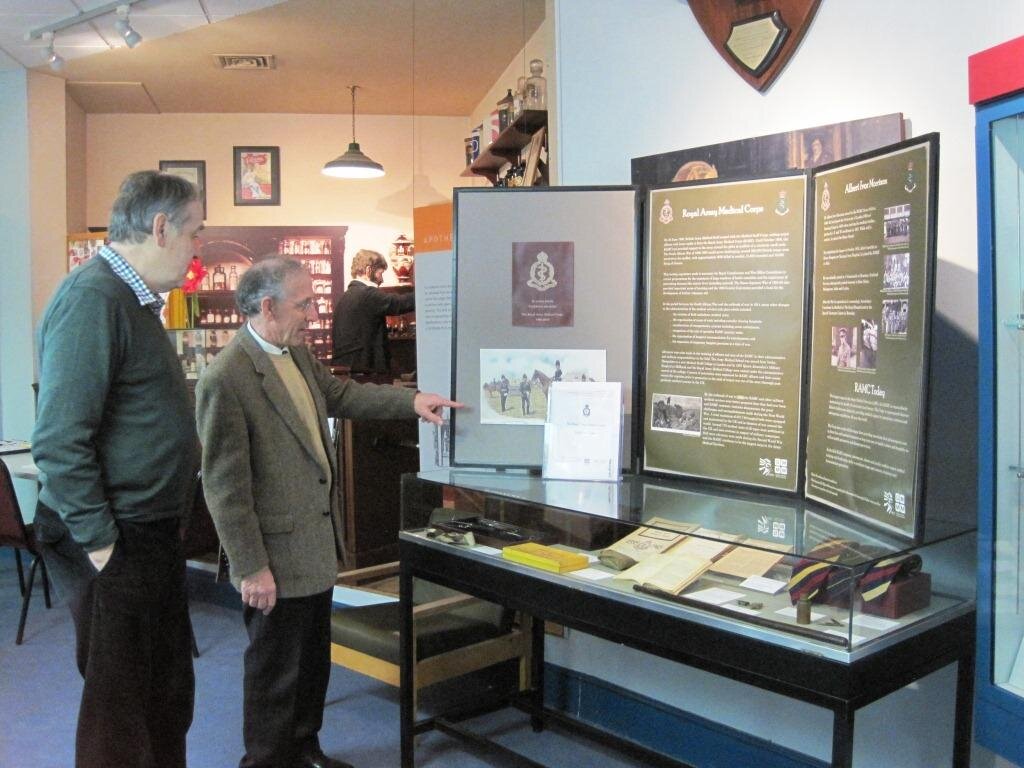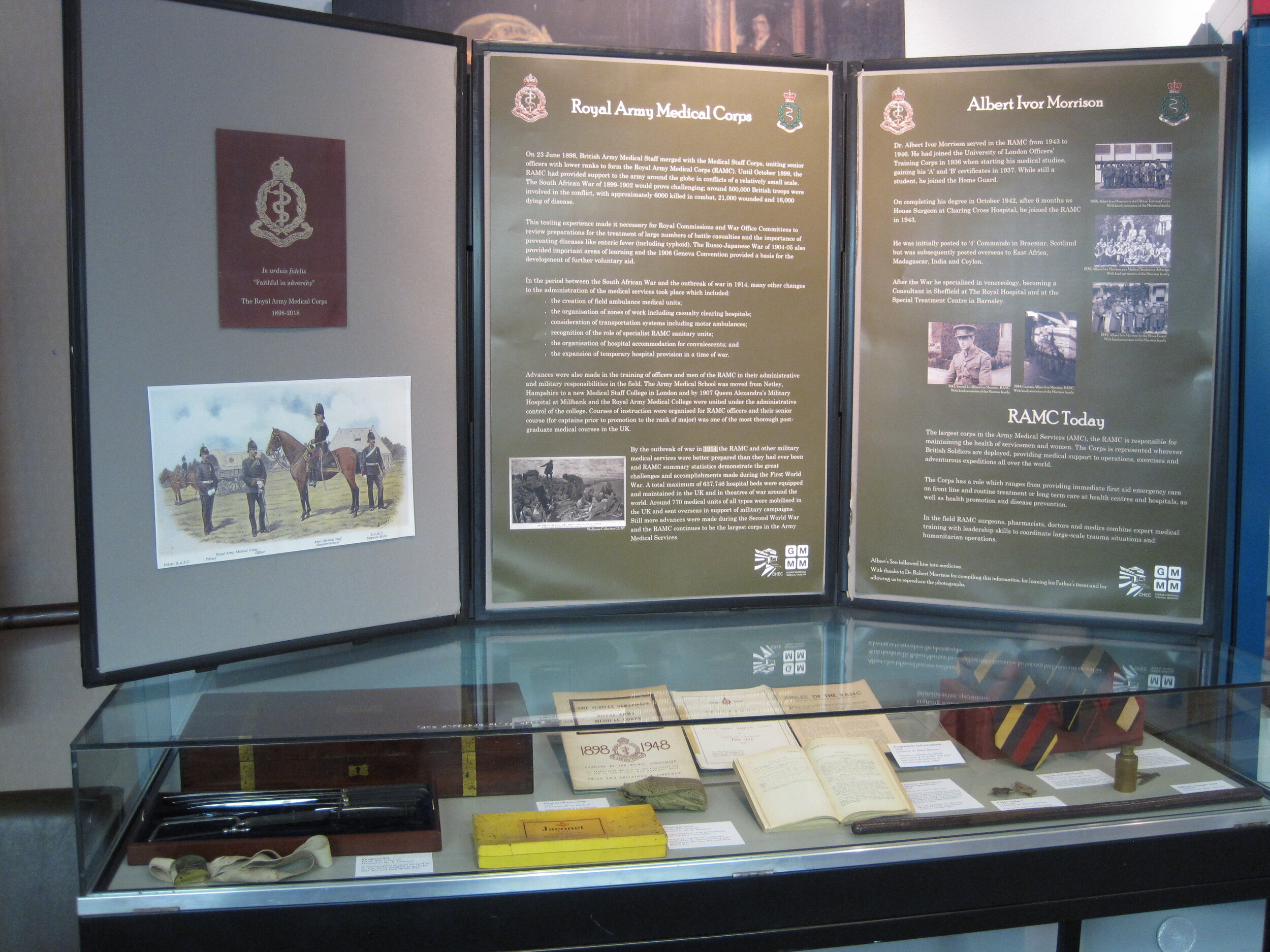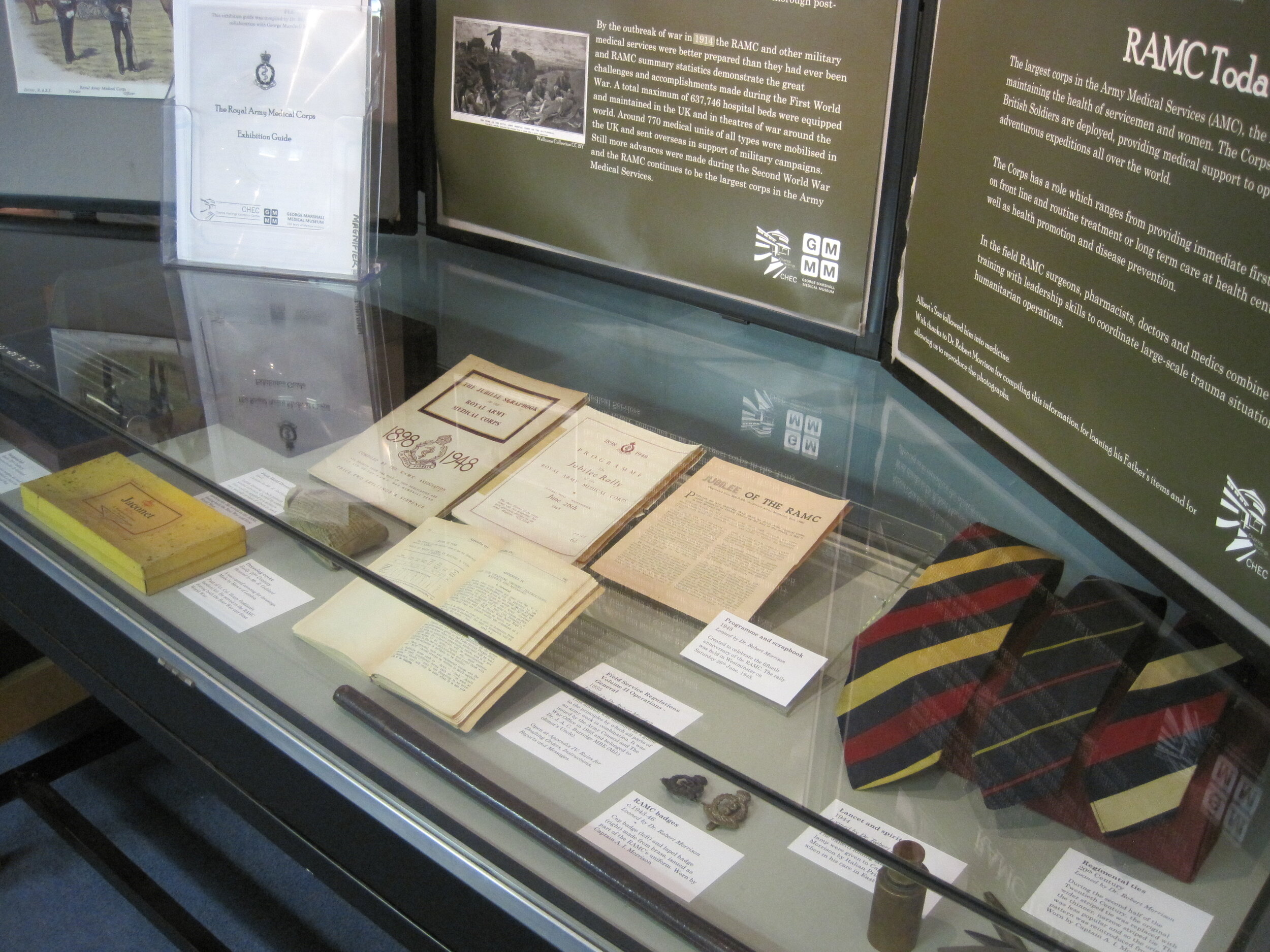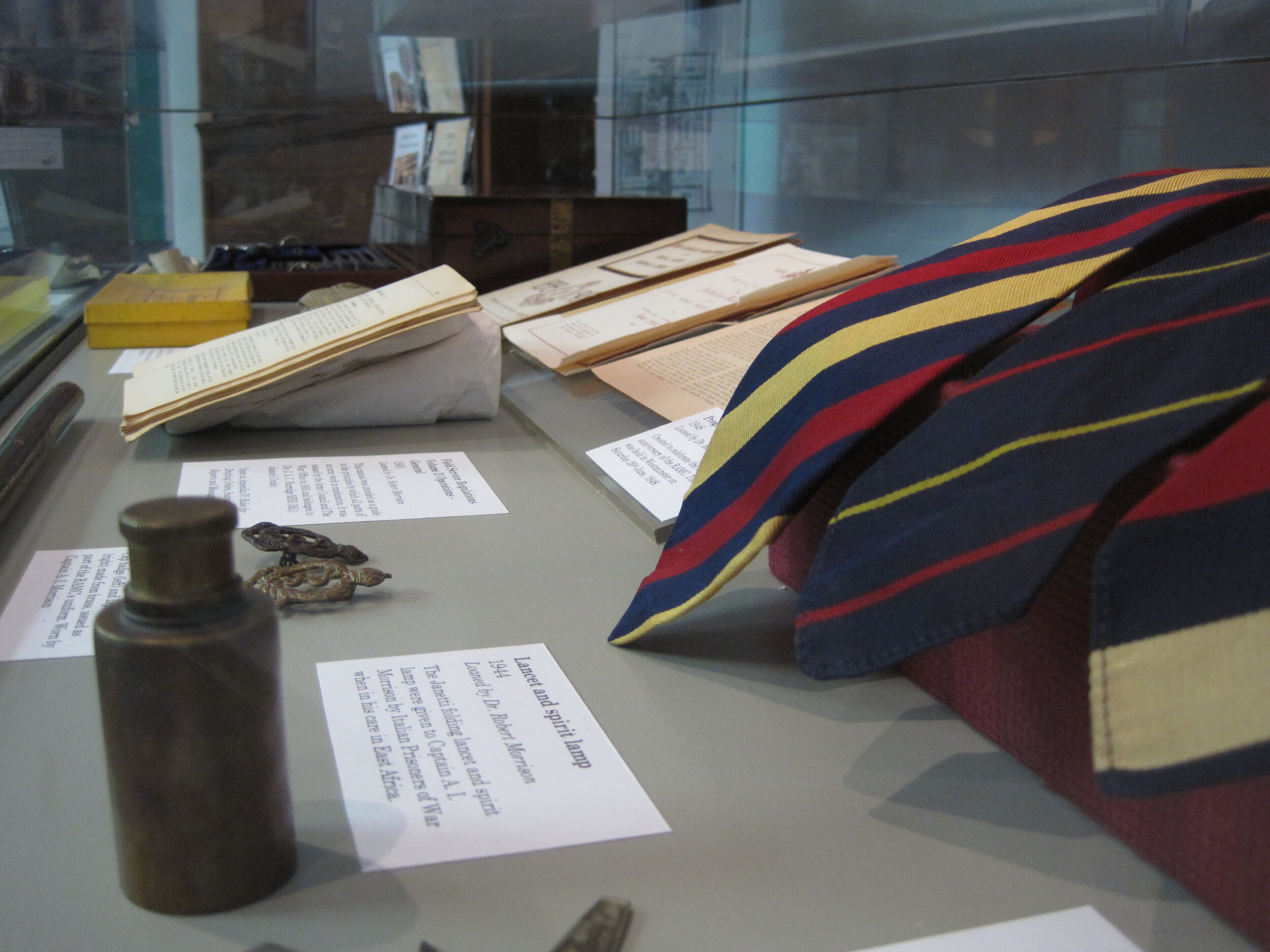royal army medical corps
In late 2018 to 2019, the George Marshall Medical Museum held a temporary display about the Royal Army Medical Corps.
While we don’t have photographs of all the displayed artefacts, we do have the original exhibition texts, supporting images and some downloadable handouts which you can download by clicking on the following links which will download as separate .pdf files.
Exhibition Panels
On 23 June 1898, British Army Medical Staff merged with the Medical Staff Corps, uniting senior officers with lower ranks to form the Royal Army Medical Corps (RAMC). Until October 1899, the RAMC had provided support to the army around the globe in conflicts of a relatively small scale. The South African War of 1899-1902 would prove challenging; around 500,000 British troops were involved in the conflict, with approximately 6000 killed in combat, 21,000 wounded and 16,000 dying of disease.
This testing experience made it necessary for Royal Commissions and War Office Committees to review preparations for the treatment of large numbers of battle casualties and the importance of preventing diseases like enteric fever (including typhoid). The Russo-Japanese War of 1904-05 also provided important areas of learning and the 1906 Geneva Convention provided a basis for the development of further voluntary aid.
In the period between the South African War and the outbreak of war in 1914, many other changes to the administration of the medical services took place which included:
the creation of field ambulance medical units;
the organisation of zones of work including casualty clearing hospitals;
consideration of transportation systems including motor ambulances;
recognition of the role of specialist RAMC sanitary units;
the organisation of hospital accommodation for convalescents; and
the expansion of temporary hospital provision in time of war.
Advances were also made in the training of officers and men of the RAMC in their administrative and military responsibilities in the field. The Army Medical School was moved from Netley, Hampshire to a new Medical Staff College in London and by 1907 Queen Alexandra’s Military Hospital at Millbank and the Royal Army Medical College were united under the administrative control of the college. Courses of instruction were organised for RAMC officers and their senior course (for captains prior to promotion to the rank of major) was one of the most thorough post-graduate medical courses in the UK.
By the outbreak of war in 1915 the RAMC and other military medical services were better prepared than they had ever been and RAMC summary statistics demonstrate the great challenges and accomplishments made during the First World War. A total maximum of 637,746 hospital beds were equipped and maintained in the UK and in theatres of war around the world. Around 770 medical units of all types were mobilised in the UK and sent overseas in support of military campaigns. Still more advances were made during the Second World War and the RAMC continues to be the largest corps in the Army Medical Services.
Albert Ivor Morrison
Dr. Albert Ivor Morrison served in the RAMC from 1943 to 1946. He had joined the University of London Officers’ Training Corps in 1936 when starting his medical studies, gaining his ‘A’ and ‘B’ certificates in 1937. While still a student, he joined the Home Guard. On completing his degree in October 1942, after 6 months as House Surgeon at Charing Cross Hospital, he joined the RAMC in 1943. He was initially posted to ‘4’ Commando in Braemar, Scotland but was subsequently posted overseas to East Africa, Madagascar, India and Ceylon. After the War he specialised in venereology, becoming a Consultant in Sheffield at The Royal Hospital and at the Special Treatment Centre in Barnsley.
Photographs from left to right with permission from the Morrison family: Albert Ivor Morrison in the Officer Training Corps (1938); Albert Ivor Morrison as a Medical Student in Ashridge (1939); Albert Ivor Morrison in the Home Guard (1942); Second Lt. Albert Ivor Morrison RAMC (1943); Captain Albert Ivor Morrison RAMC (1944).
RAMC TODAY
The largest corps in the Army Medical Services (AMC), the RAMC is responsible for maintaining the health of servicemen and women. The Corps is represented wherever British Soldiers are deployed, providing medical support to operations, exercises and adventurous expeditions all over the world. The Corps has a role which ranges from providing immediate first aid emergency care on front line and routine treatment or long term care at health centres and hospitals, as well as health promotion and disease prevention. In the field RAMC surgeons, pharmacists, doctors and medics combine expert medical training with leadership skills to coordinate large-scale trauma situations and humanitarian operations.
Albert’s Son followed him into medicine.
With thanks to Dr. Robert Morrison for compiling this information, for loaning his Father’s items and for allowing us to reproduce the photographs.










